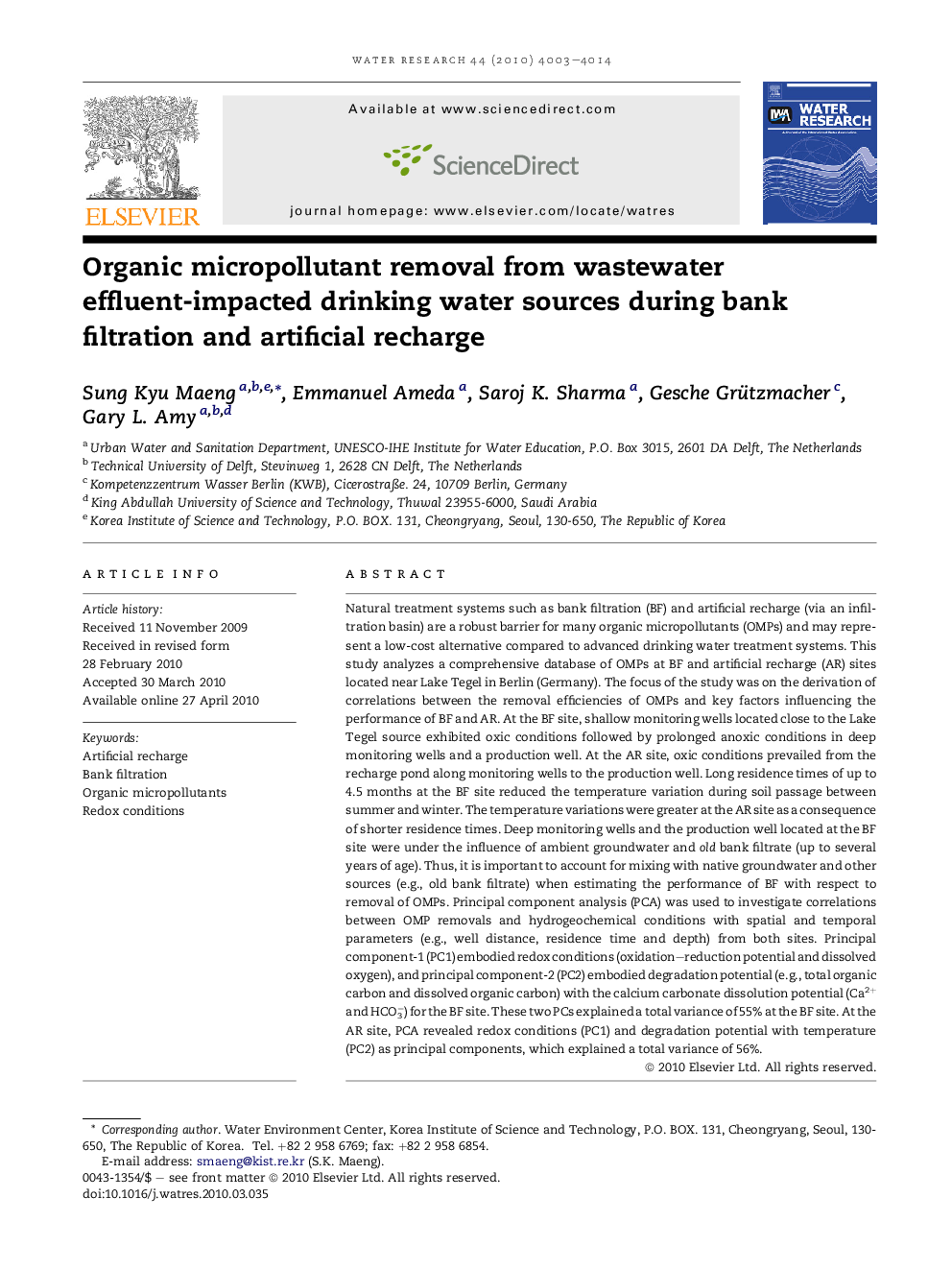| کد مقاله | کد نشریه | سال انتشار | مقاله انگلیسی | نسخه تمام متن |
|---|---|---|---|---|
| 4483642 | 1316895 | 2010 | 12 صفحه PDF | دانلود رایگان |

Natural treatment systems such as bank filtration (BF) and artificial recharge (via an infiltration basin) are a robust barrier for many organic micropollutants (OMPs) and may represent a low-cost alternative compared to advanced drinking water treatment systems. This study analyzes a comprehensive database of OMPs at BF and artificial recharge (AR) sites located near Lake Tegel in Berlin (Germany). The focus of the study was on the derivation of correlations between the removal efficiencies of OMPs and key factors influencing the performance of BF and AR. At the BF site, shallow monitoring wells located close to the Lake Tegel source exhibited oxic conditions followed by prolonged anoxic conditions in deep monitoring wells and a production well. At the AR site, oxic conditions prevailed from the recharge pond along monitoring wells to the production well. Long residence times of up to 4.5 months at the BF site reduced the temperature variation during soil passage between summer and winter. The temperature variations were greater at the AR site as a consequence of shorter residence times. Deep monitoring wells and the production well located at the BF site were under the influence of ambient groundwater and old bank filtrate (up to several years of age). Thus, it is important to account for mixing with native groundwater and other sources (e.g., old bank filtrate) when estimating the performance of BF with respect to removal of OMPs. Principal component analysis (PCA) was used to investigate correlations between OMP removals and hydrogeochemical conditions with spatial and temporal parameters (e.g., well distance, residence time and depth) from both sites. Principal component-1 (PC1) embodied redox conditions (oxidation–reduction potential and dissolved oxygen), and principal component-2 (PC2) embodied degradation potential (e.g., total organic carbon and dissolved organic carbon) with the calcium carbonate dissolution potential (Ca2+ and HCO3−) for the BF site. These two PCs explained a total variance of 55% at the BF site. At the AR site, PCA revealed redox conditions (PC1) and degradation potential with temperature (PC2) as principal components, which explained a total variance of 56%.
Journal: Water Research - Volume 44, Issue 14, July 2010, Pages 4003–4014